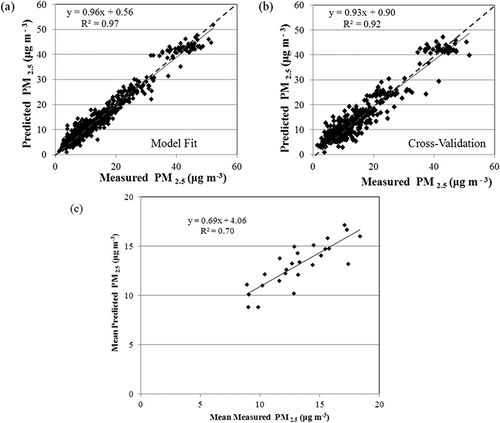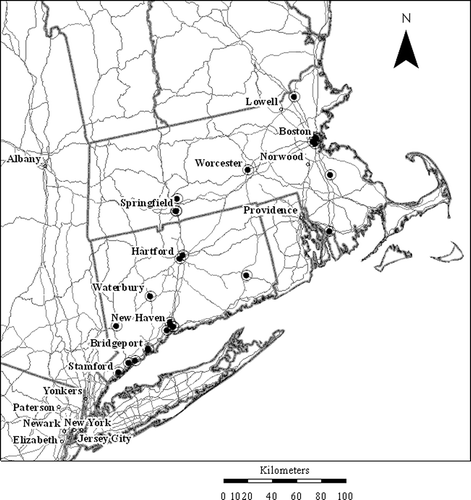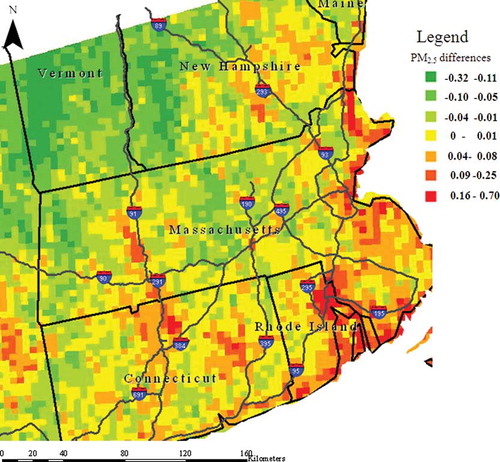Figures & data
Table 1. Site bias (μg m− 3) estimates for 26 EPA PM2.5 monitoring sites
Figure 2. The relationship between column aerosol optical depth (AOD) derived from the GOES satellite and 24-hr integrated PM2.5 concentrations measurements at the 26 EPA sites in New England.
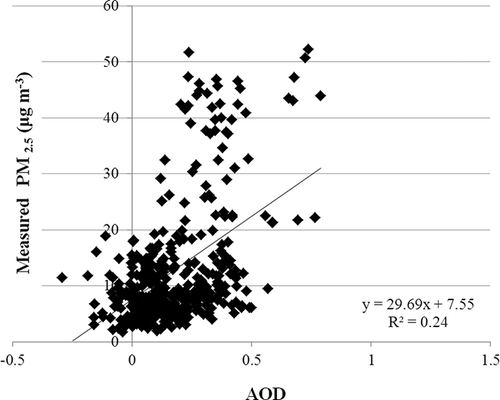
Figure 3. (a–c) Frequency distributions of AOD values as a function of PM2.5 concentrations. (d–f) Frequency distribution of PM2.5 mass as a function of AOD values.
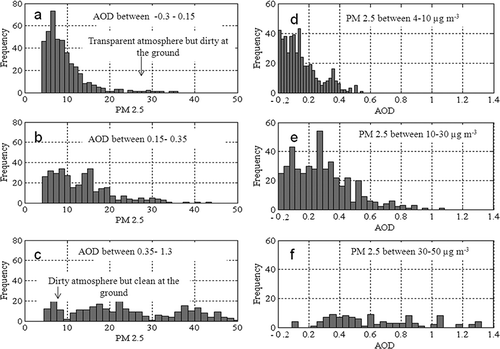
Figure 5. (a, b) Mixed-effects model cross-validation performance as assessed by 576 measured and predicted daily PM2.5 concentrations (10% of data). The solid line represents the regression line, and the dashed line displays the 1:1 line. (c) Cross-sectional comparisons between the average predicted and measured PM2.5 site concentrations.
